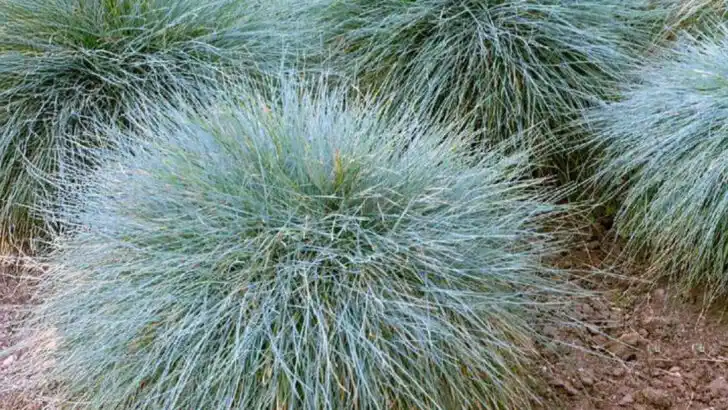Think you need constant watering to keep your plants looking lush? Think again. Some of the most vibrant, full-looking plants out there actually thrive on neglect—or at least on very little water. If you’re tired of dragging out the watering can every day (or forgetting it altogether), these plants are your perfect match.
At Plantisima, we know that many of our readers love greenery but live in places where drought, busy schedules, or simply forgetfulness make watering a challenge. That’s why we’ve curated this list of 19 low-water plants that don’t just survive dry conditions—they flourish. From bold leafy greens to sculptural succulents, they prove you don’t need to sacrifice style for sustainability.
Whether you’re designing a water-wise garden, decorating a sun-soaked apartment, or just looking to lower your plant maintenance, these picks will fill your space with lush, Instagram-worthy vibes—without draining your time or your tap.
Lavender
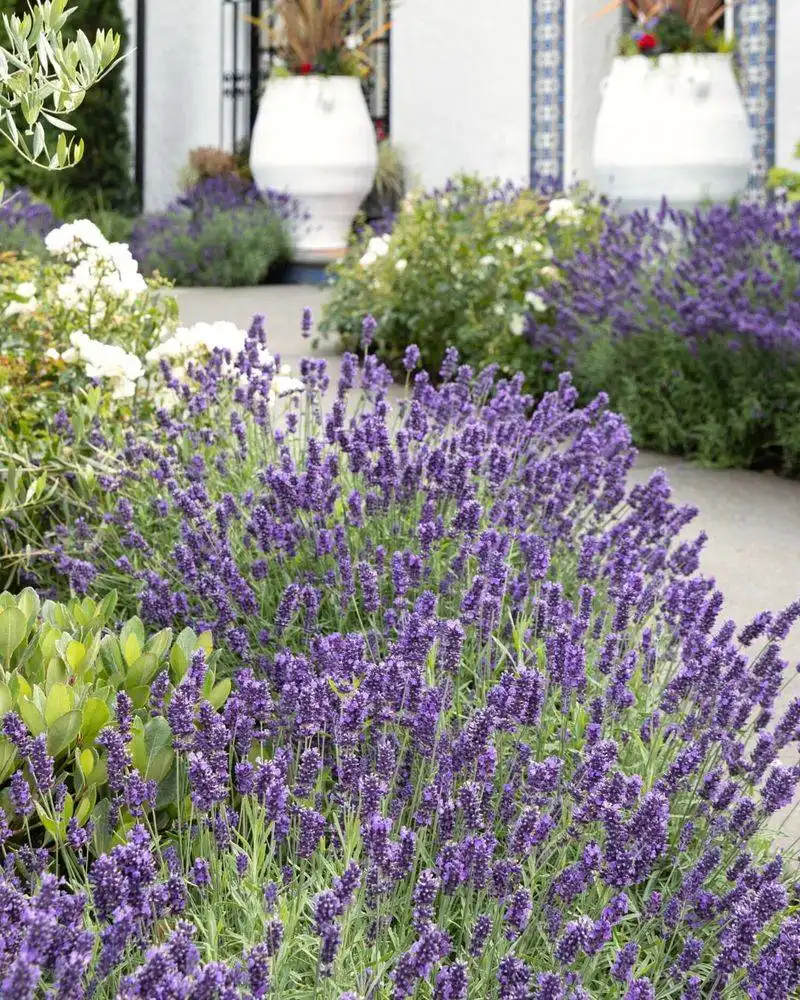
Lavender, with its iconic purple blooms and soothing scent, effortlessly brings a touch of elegance to any garden. This Mediterranean native thrives in sunny locations with well-drained soil, making it perfect for low-water gardens. Its silvery foliage adds an extra layer of charm, contrasting beautifully with other plants.
Not only is lavender drought-tolerant, but it also attracts bees and butterflies, adding life and movement to your garden. Whether used as a border plant or in a container, lavender’s versatility and beauty are unmatched.
Consider its calming aroma an added bonus to your outdoor space.
Agave

Known for its striking, architectural shape, agave is a standout choice for those seeking a bold statement in their garden. Its thick, fleshy leaves store water efficiently, allowing it to thrive in arid environments.
Agave’s slow growth and minimal maintenance needs make it an ideal option for busy gardeners. It comes in various sizes and colors, from the classic blue-green to variegated varieties, each offering a unique look.
While some species can grow large, many remain manageable, fitting nicely into any landscape design.
Sedum

Sedum, often referred to as stonecrop, is a succulent that excels in low-water environments. Its ability to withstand harsh conditions makes it a popular choice for rock gardens and rooftop green spaces.
With an array of colors and textures, sedum offers endless possibilities for creative planting. Its star-shaped flowers add a burst of color that attracts pollinators like bees and butterflies.
Whether you choose ground-covering varieties or taller options, sedum’s adaptability ensures it remains a garden favorite.
Russian Sage
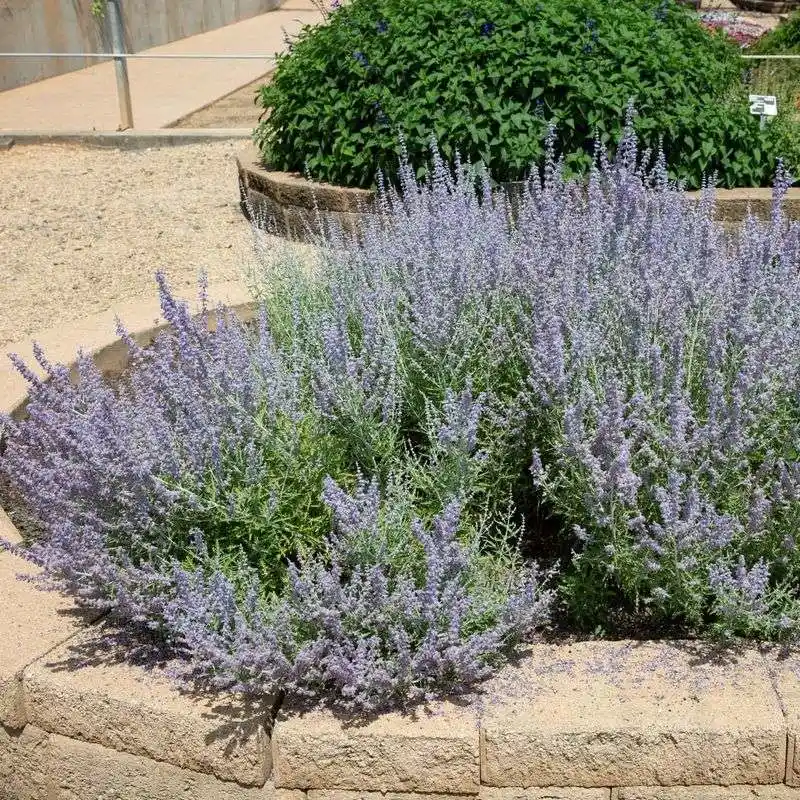
With its tall, airy spikes of lavender-blue flowers, Russian sage adds a touch of whimsy to any garden. This perennial thrives in dry, sunny locations, showcasing its resilience with minimal care.
The silvery foliage not only enhances its visual appeal but also contrasts nicely with other plants. Its ability to attract beneficial insects makes it a valuable addition to eco-conscious gardens.
Russian sage’s long blooming season ensures your garden remains vibrant and colorful throughout the summer months.
Yarrow
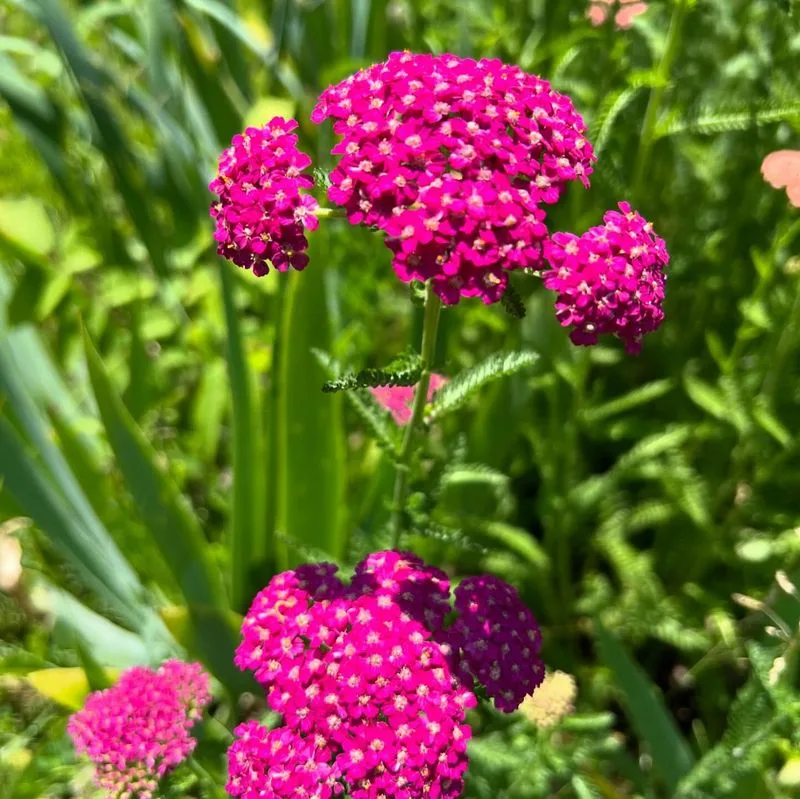
Yarrow is a hardy perennial known for its clusters of flat-topped flowers and fern-like foliage. Its drought tolerance and ability to thrive in poor soil conditions make it a reliable choice for water-wise gardens.
The flowers come in a variety of colors, including yellow, pink, and red, providing plenty of options for garden designs. Yarrow’s long blooming period and ability to attract pollinators enhance its garden appeal.
In addition to its ornamental value, yarrow has been used for medicinal purposes for centuries, adding historical interest to its charm.
Echinacea
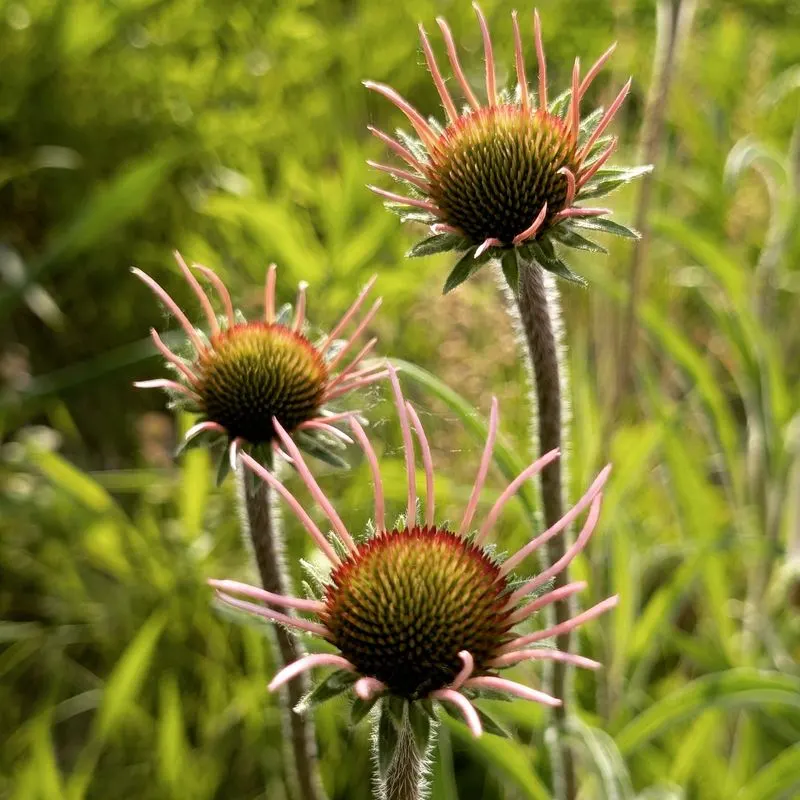
Echinacea, commonly known as coneflower, is celebrated for its vibrant petals and distinctive cone-shaped centers. This North American native thrives in full sun and well-drained soil, making it perfect for xeriscaping.
Its long-lasting blooms are not only beautiful but also attract a myriad of pollinators, including butterflies and hummingbirds. Echinacea’s resilience to drought and heat ensures it remains a garden staple.
Beyond its visual appeal, echinacea is valued for its medicinal properties, adding a layer of practical benefits to its ornamental beauty.
Blue Fescue
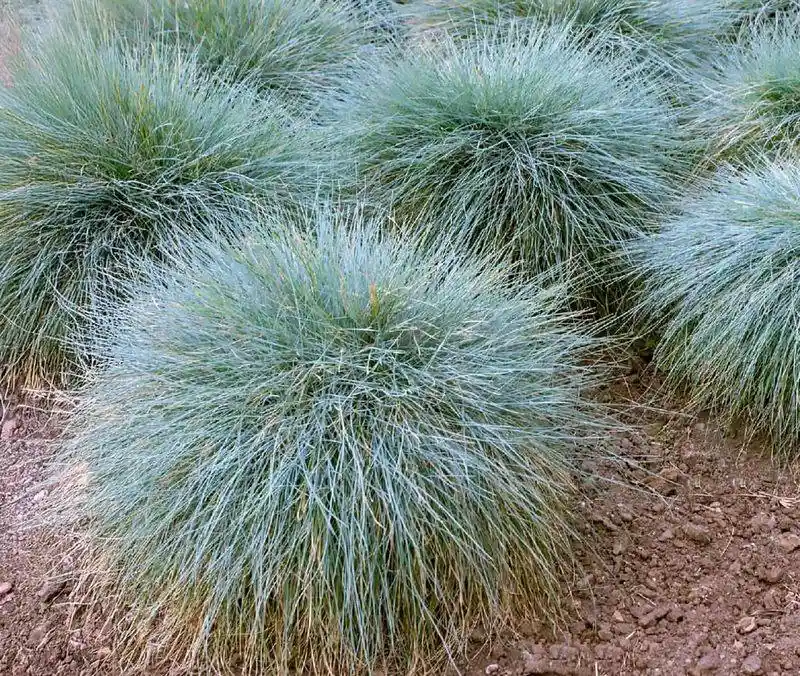
For a touch of texture and color, blue fescue is a perfect addition to any low-water garden. This ornamental grass is known for its fine, spiky blades that range from blue-green to steel-blue.
Its compact size and clump-forming habit make it versatile, fitting well into borders, rock gardens, or even containers. Blue fescue requires minimal maintenance, thriving in sunny and dry locations.
The subtle beauty of this grass lies in its ability to complement other plants, adding depth and interest without overpowering the landscape.
Bougainvillea
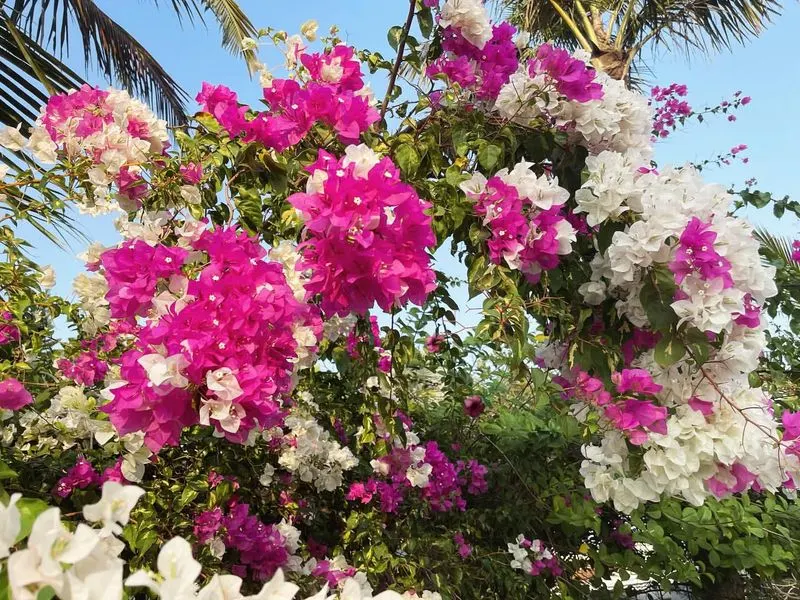
Famous for its stunning, papery bracts, bougainvillea transforms any barren space into a vibrant display of color. This tropical plant flourishes in sunny climates and tolerates dry conditions remarkably well.
Bougainvillea’s vigorous growth makes it ideal for covering walls, fences, or trellises, creating a lush backdrop for other plants. Its cascading growth habit and bright hues add drama and elegance to gardens.
While it requires occasional pruning to maintain shape, the spectacular blooms are worth the effort.
Ice Plant
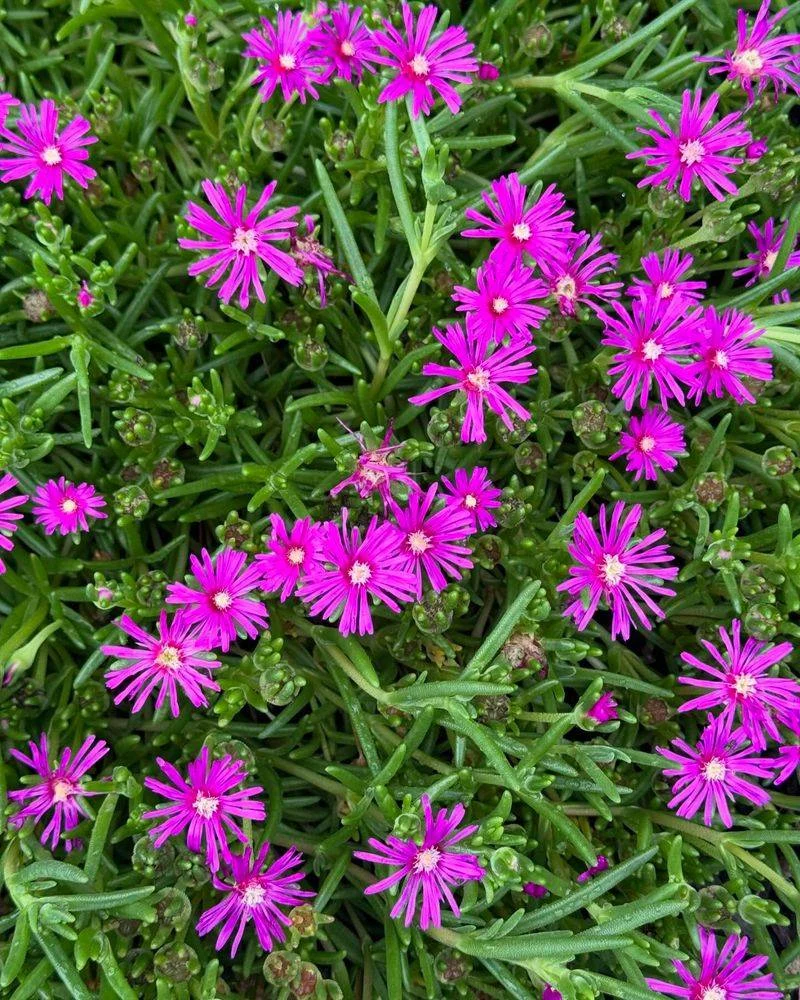
The ice plant is a succulent ground cover that dazzles with its vivid blooms and shimmering foliage. Its name comes from the tiny, ice-like structures on its leaves that sparkle in the sun.
Thriving in sandy, well-drained soil, the ice plant is perfect for coastal gardens or dry landscapes. It blooms profusely, offering a carpet of color that attracts pollinators.
This low-maintenance plant is ideal for adding color to borders, rock gardens, or slopes, providing a cheerful and hardy option for water-wise landscapes.
Rosemary
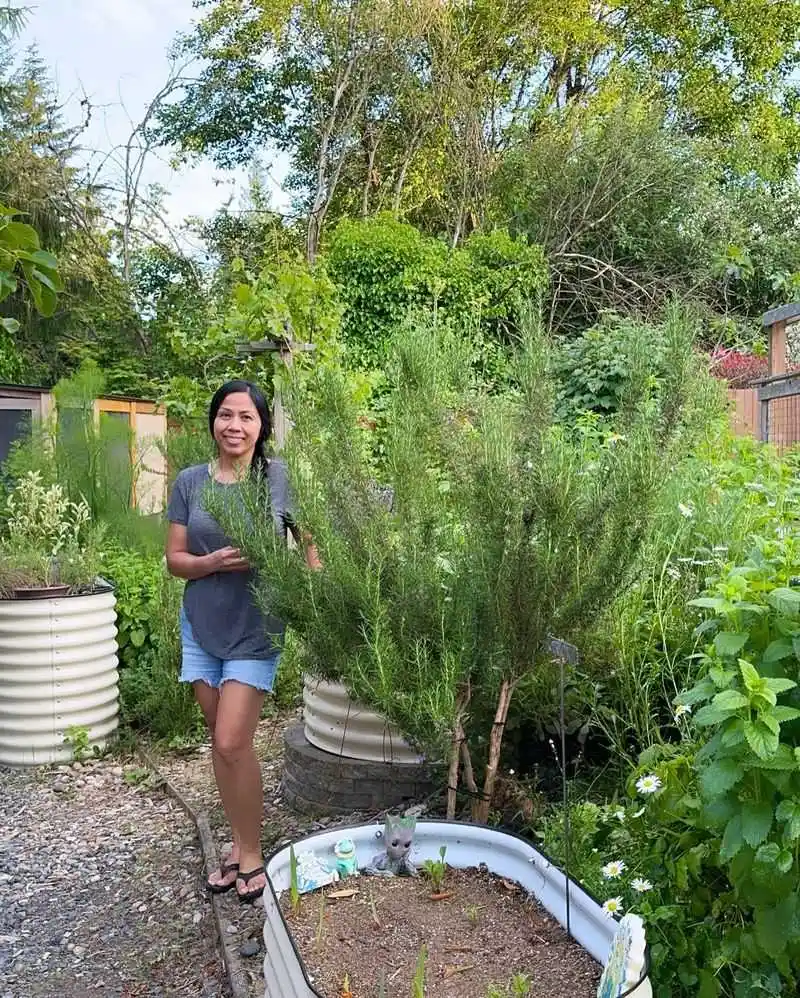
Rosemary is more than a culinary delight; it’s a beautiful addition to any drought-tolerant garden. This evergreen shrub boasts needle-like leaves and delicate blue flowers, thriving in well-drained soil and full sun.
Its aromatic foliage is not only a treat for the senses but also attracts bees and other beneficial insects. Rosemary’s versatility allows it to be shaped into hedges, grown in containers, or used as a fragrant ground cover.
Low water needs and robust growth make rosemary an essential plant for xeriscaping.
Thyme
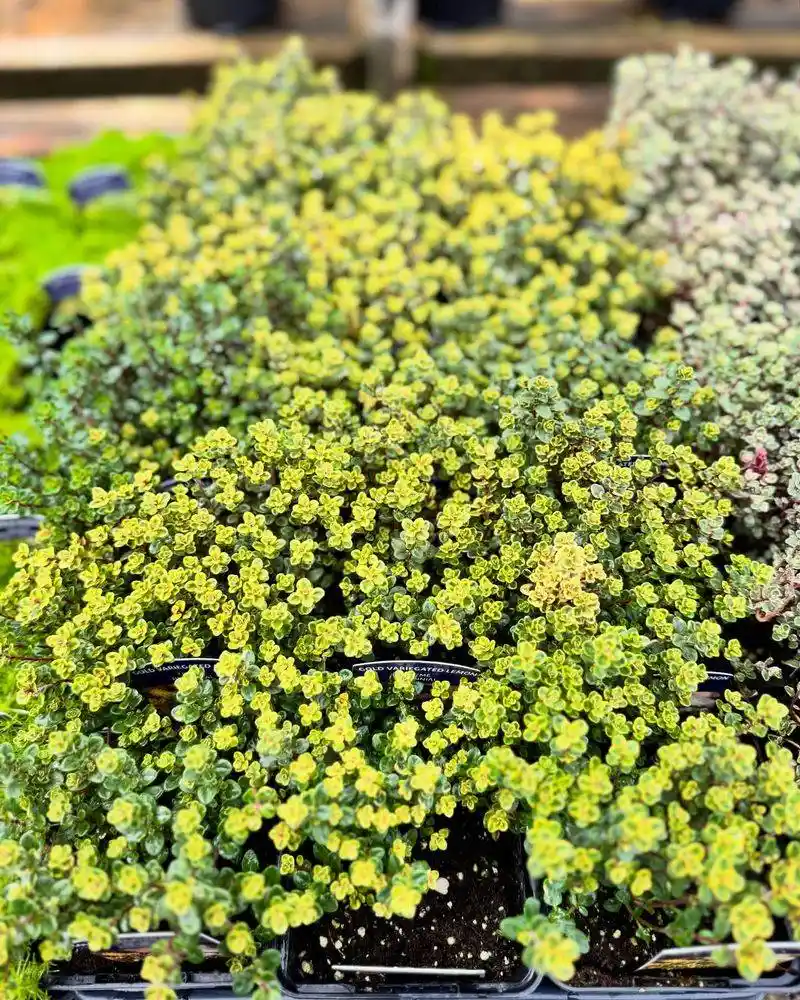
Thyme is a versatile herb that excels in dry conditions, thanks to its hardy nature and low water requirements. Its small, aromatic leaves and tiny purple flowers make it a charming addition to herb gardens or pathways.
This perennial herb is not only ornamental but also functional, providing fresh sprigs for culinary use. Thyme attracts pollinators, enhancing the ecological health of your garden.
Its creeping growth habit and ability to thrive in rocky or sandy soil make thyme an excellent choice for ground cover.
California Poppy
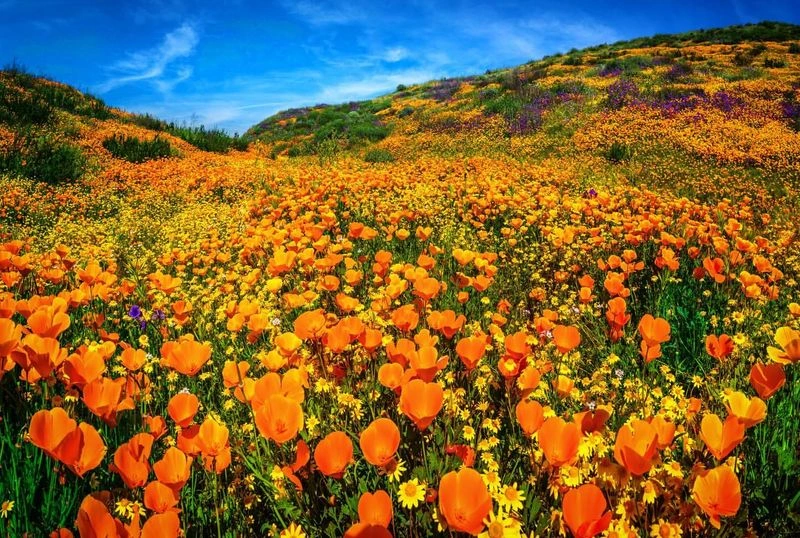
The California poppy, with its iconic orange blooms, brings a burst of color to dry landscapes. This annual wildflower thrives in poor, well-drained soil and full sun, making it ideal for xeriscaping.
Known for its self-seeding capabilities, the California poppy requires minimal maintenance, providing continuous color year after year. Its delicate, fern-like foliage adds texture and movement to gardens.
In addition to its beauty, the California poppy is the state flower of California, adding cultural significance to its visual appeal.
Lantana
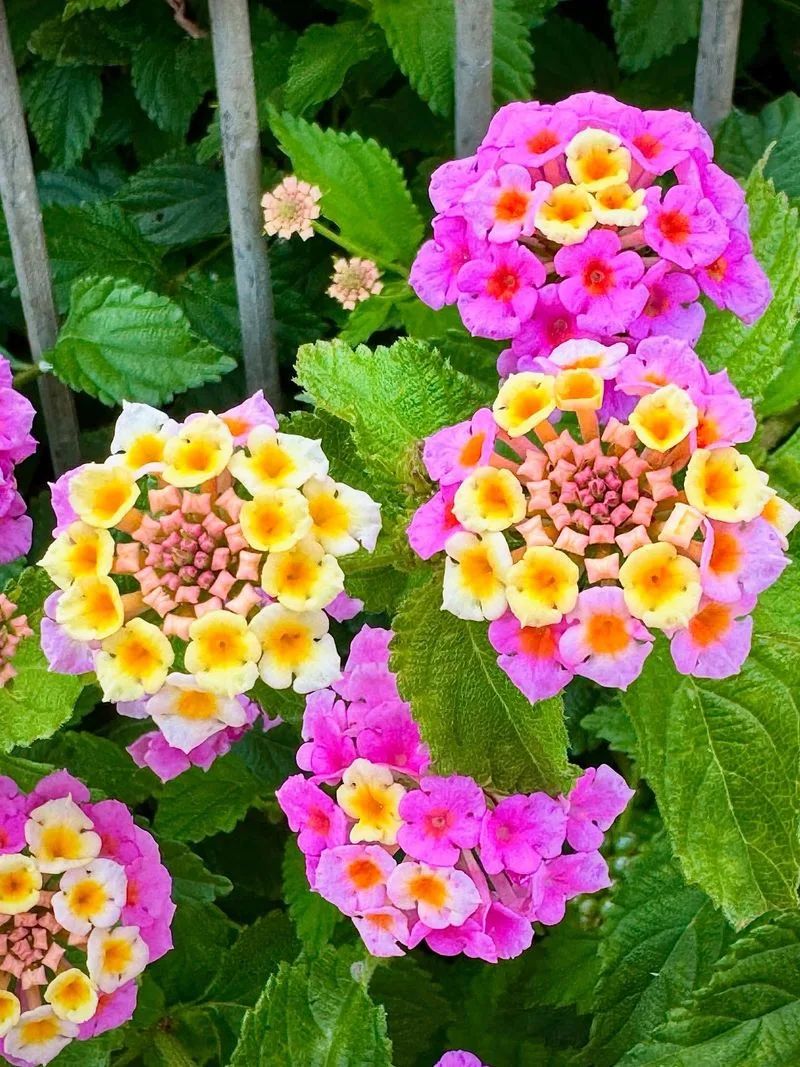
Lantana is a vibrant shrub known for its colorful clusters of flowers that change hues as they age. Thriving in hot, dry climates, it adds a splash of color to low-water gardens.
The flowers attract butterflies and hummingbirds, creating a lively and dynamic garden environment. Lantana’s robust nature allows it to withstand harsh conditions while requiring minimal care.
Whether used as a ground cover or a shrub, lantana’s ever-changing colors ensure your garden remains engaging throughout the seasons.
Gaillardia
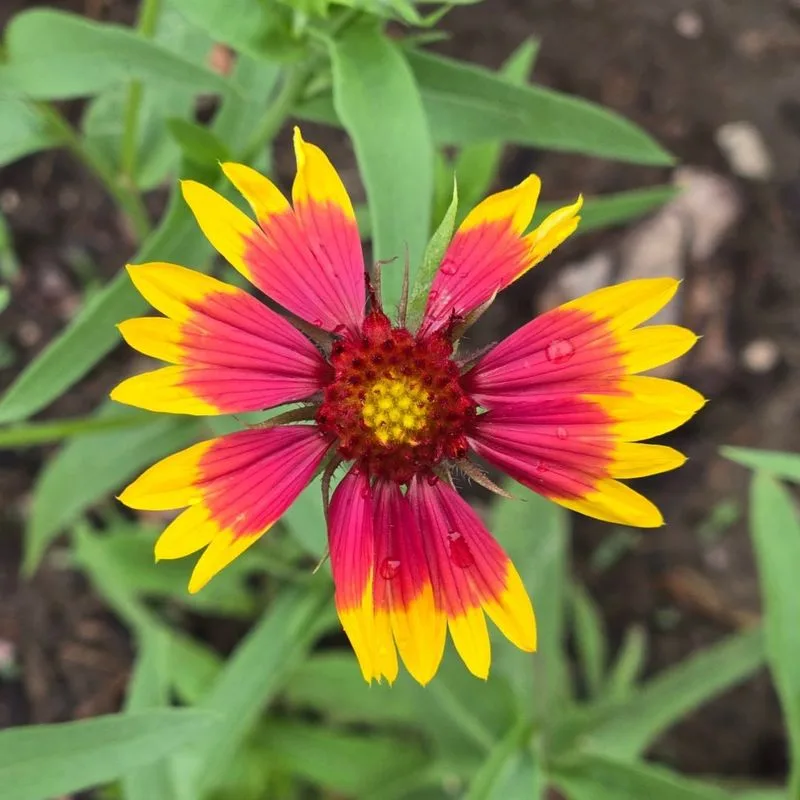
Gaillardia, or blanket flower, is renowned for its fiery red and yellow blooms that resemble a warm sunset. This drought-tolerant perennial thrives in poor soil conditions, requiring little water to flourish.
Its long blooming season and resistance to pests make it a favorite among gardeners seeking low-maintenance plants. Gaillardia’s vibrant flowers attract pollinators, adding life and color to any garden.
With its cheerful appearance and hardy nature, gaillardia ensures a lively display from early summer to fall.
Salvia
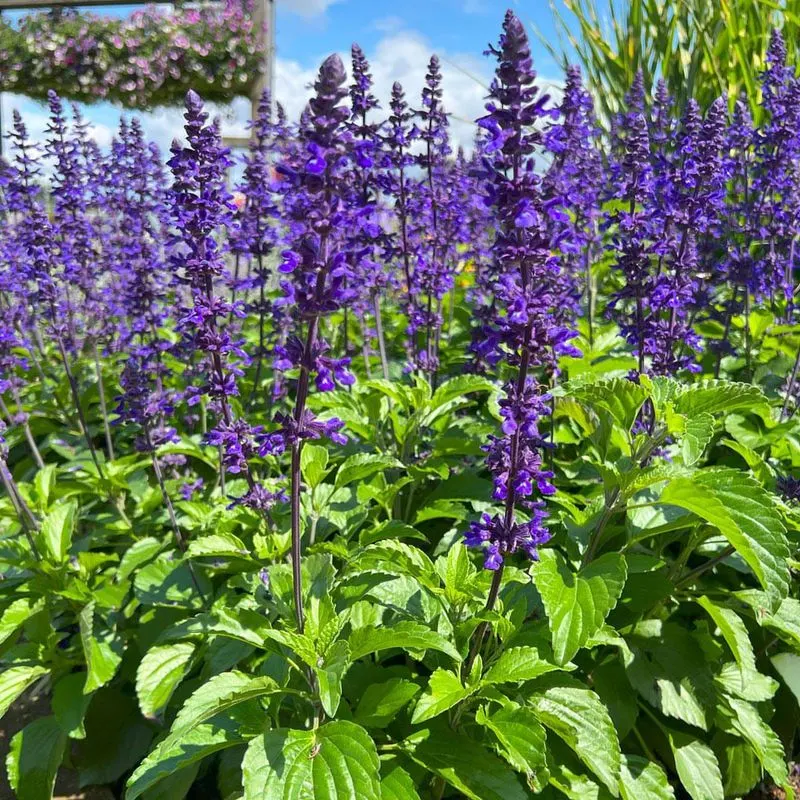
Salvia, with its tall, graceful spires of flowers, adds elegance and height to any garden. Known for its resilience to dry conditions, this perennial thrives in full sun and well-drained soil.
The vibrant blooms of salvia attract hummingbirds and bees, enhancing the biodiversity of your garden. Its aromatic foliage adds an extra sensory dimension, making it a delightful choice for borders or containers.
Salvia’s diverse range of colors and forms ensures that there’s a variety to suit every garden style.
Penstemon
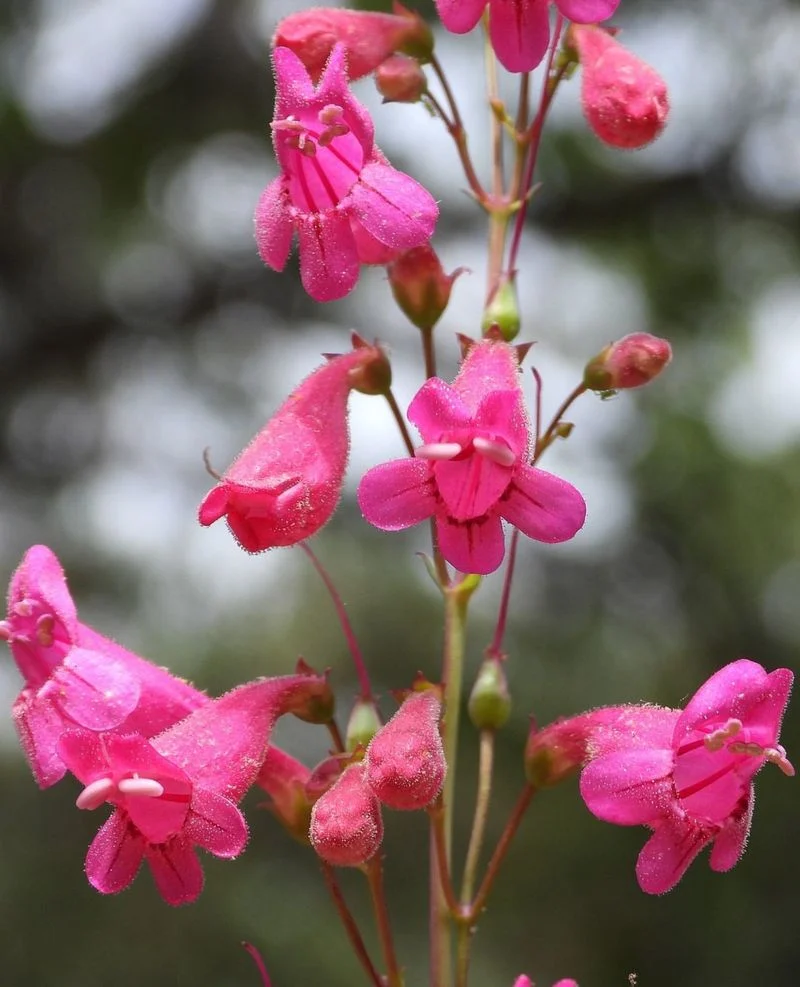
Penstemon, often called beardtongue, captivates with its tubular blooms and vibrant colors. This perennial thrives in sunny, dry conditions, making it ideal for rock gardens or wildflower meadows.
The flowers of penstemon attract a variety of pollinators, including hummingbirds and bees, adding life to your garden. Its upright growth habit and striking flower spikes provide structure and interest.
With many species and hybrids available, penstemon offers versatility and charm to any landscape, ensuring it remains a gardener’s favorite.
Verbena
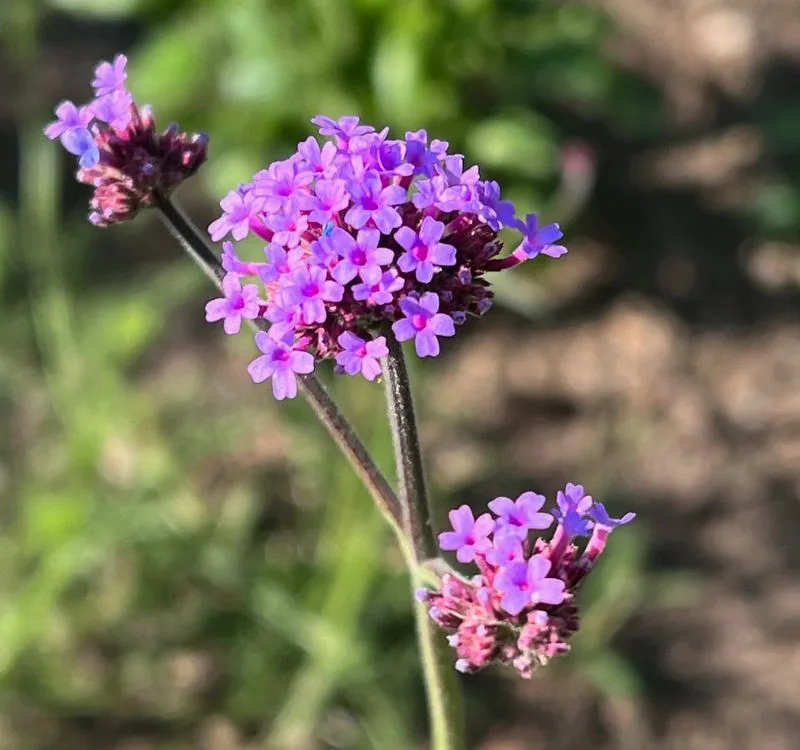
Verbena is celebrated for its clusters of small, eye-catching flowers that bloom profusely in dry conditions. This annual or perennial plant thrives in sunny locations, offering a vibrant display throughout the growing season.
The low-growing habit of verbena makes it perfect for ground covers or hanging baskets, adding a splash of color to any garden setting. Its ability to attract butterflies enhances its appeal.
Verbena’s adaptability and cheerful blooms ensure it remains a popular choice for gardeners seeking color and resilience.
Cotoneaster
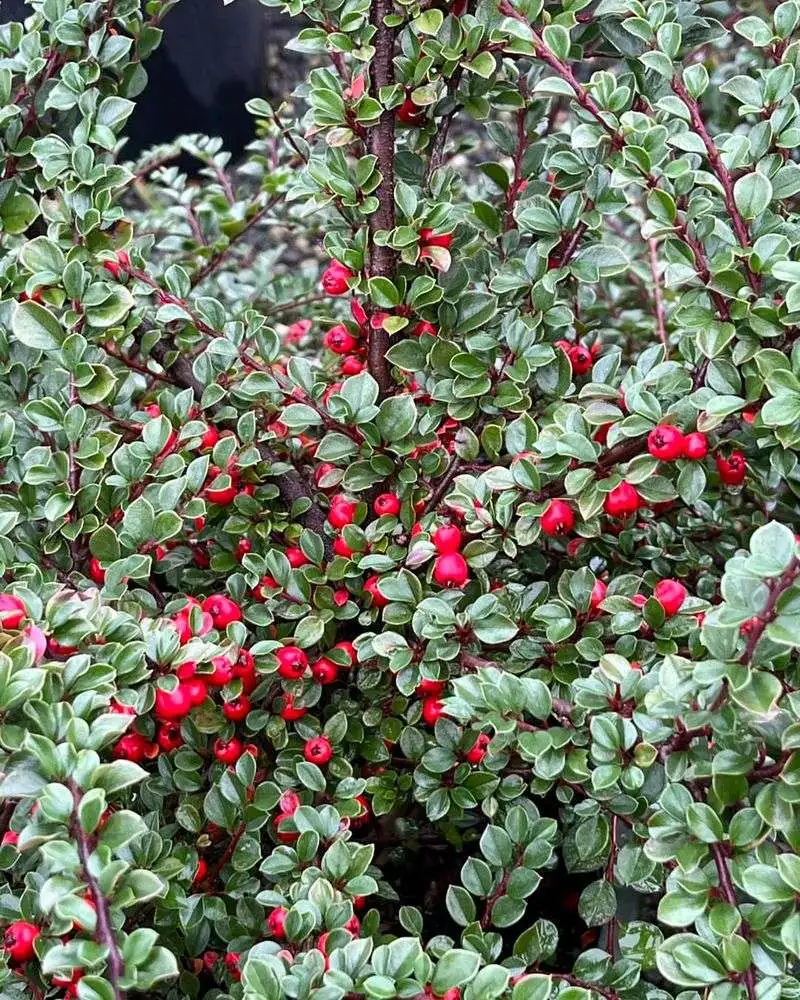
Cotoneaster is a versatile shrub known for its attractive berries and glossy leaves. This hardy plant thrives in well-drained soil and can tolerate drought, making it suitable for low-water gardens.
Its arching branches and colorful berries provide visual interest throughout the year, attracting birds to your garden. Cotoneaster’s low maintenance needs and ability to grow in various conditions make it a reliable choice.
Whether used as a hedge, ground cover, or accent plant, cotoneaster adds structure and beauty to any landscape.
Yucca
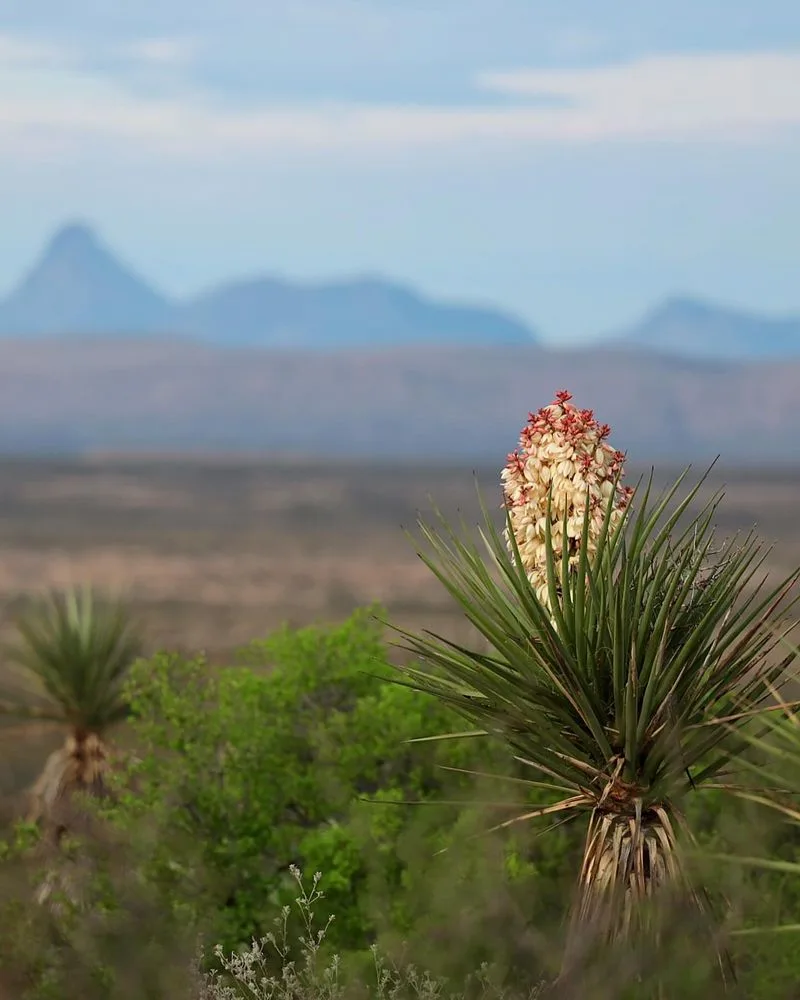
Yucca’s bold, architectural form makes it a striking addition to any garden. With its sharp, sword-like leaves and tall flower spikes, this plant thrives in arid environments.
Yucca’s low water needs and tolerance for poor soil make it a practical choice for xeriscaping. Its dramatic silhouette and white blooms add a touch of elegance and intrigue.
Whether used as a focal point or in a mixed border, yucca’s distinctive appearance ensures it stands out in any garden setting.

